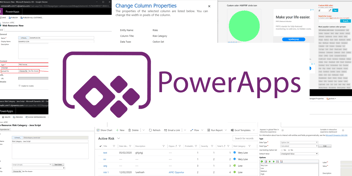IT recruitment insight: How to land an IT leader role
If you’re looking to step up into a leadership role, or if you’re looking for your next opportunity, there are several steps you can take to improve your prospects and get on IT recruitment agencies’ radars.
1, Identify what you want from your next role and decipher your plan:
Before applying for a role or even writing your CV, it is important to know what you actually want from your next job.
Consider the type of role you would like (for example; technical, strategic, transformational), the type of organisation you would like to work for, the challenges that you’d like to tackle, and the company culture you want.
By considering these factors, you will be better able to identify the opportunities that are right for you in terms of your interests, experience, and skill set.
2, Define your personal brand:
Your brand is your professional persona. It is a digital, visual, or written representation of your skills and expertise, and it should demonstrate how you could benefit your potential employer’s organisation.
Set aside some time to work on your brand. Start by listing all your soft and technical skills, your key attributes, and your achievements. Then write three sentences that define you as a leader. Reread and tweak these words and then make them your mantra. Be genuine and authentic. Emphasise your strengths but don’t try to be something you’re not. Every IT recruitment agency knows that there is no point submitting a generic CV to an employer and that the employer will pick-up on your strengths and weaknesses at interview stage. Let’s not waste everybody’s time.
3, Optimise your LinkedIn profile:
LinkedIn is the best digital platform for your brand. IT recruitment agencies find you by searching present past and job titles, locations, industries, key words, companies, and skills.
Here are six simple steps that you can take to get your LinkedIn profile noticed.
- Have an up-to-date professional photo. Bring yourself to life! You don’t have to go to a professional photography studio to achieve this. Just ensure your profile snap is simple and clean cut. Don’t use your holiday pictures and make sure your face can be seen and that you look friendly.
- Have detailed descriptions of all your roles. Make sure these include all your key skills and achievements. Every key word that you mention can be searched by IT recruiters!
- Be active, share, like, and comment on relevant articles. Joining discussions, with informed and positive opinions, will get you noticed.
- Ask for recommendations from past bosses, present colleagues, and trusted contacts. Recruiters and future employers like reading genuine recommendations from your former bosses and team members. Think of your LinkedIn recommendations as a library of positive professional references.
- Join groups where you can meet and connect with like-minded people. The wider your network is, the more opportunities will come your way.
- Follow companies that interest you. This will help you keep up-to-date with developments in the industries you want to work in. It pays to demonstrate knowledge of potential employers’ customers and competitors too.
4, Pursue speaking engagements:
Your brand needs a stage. So, if you're looking to develop it further, then you should be speaking on a regular basis.
The best way to develop your speaking skills is to start with small events and build from there. You won’t be offered high-quality speaking engagements immediately so buckle down, show willing, and begin to build your audience.
Speak from a place of knowledge. Show that you know what you're talking about, and answer questions in a way that serves your audience.
Demonstrate confidence by remaining open to feedback. Some may criticize or disagree with you. Thank others for sharing their views, and if the points they raised were legitimate, determine how you can improve and do better next time.
5, Produce a targeted job application:
Research the potential employer’s values, its culture, and research extra information to improve your application. Then, if possible, align your CV with the job description, and the organisation.
Use your network to find out who the key hiring managers are, and, if you know anyone at the company, ask them to put in a good word for you.
Once you have submitted your application, make sure you follow-up with a call and email if you don’t hear back.
6, Prepare for your interview:
When you are offered an interview, reread your research on the company and the job description thoroughly. Analyse the key responsibilities and deliverables, write out any specific questions that you think you may be asked, and consider how you will answer and what examples you will use. If you’re being supported by an IT recruiter, discuss potential questions and answers with them. They may be able to provide some unique insights.
Get your body language right in the interview. Greet the interviewers with a confident, warm handshake! Passion and energy really make an impact, so while answering questions show genuine enthusiasm for the role.
Bringing it all together
If you want to get an IT leader role, identify who you are professionally, your skills and expertise, what you want, and what you can offer to an organisation. Find platforms on which to promote your brand and then seek opportunities. When your prospects begin to develop, prepare thoroughly for your interview and follow-up to make sure the opportunity doesn’t fizzle out.
Crimson host CIO candidate workshops. Click here to visit our events page to find out more.
Crimson is an IT consultancy, an IT solutions provider, an IT recruitment agency, and a Microsoft Gold Partner operating across the UK.



